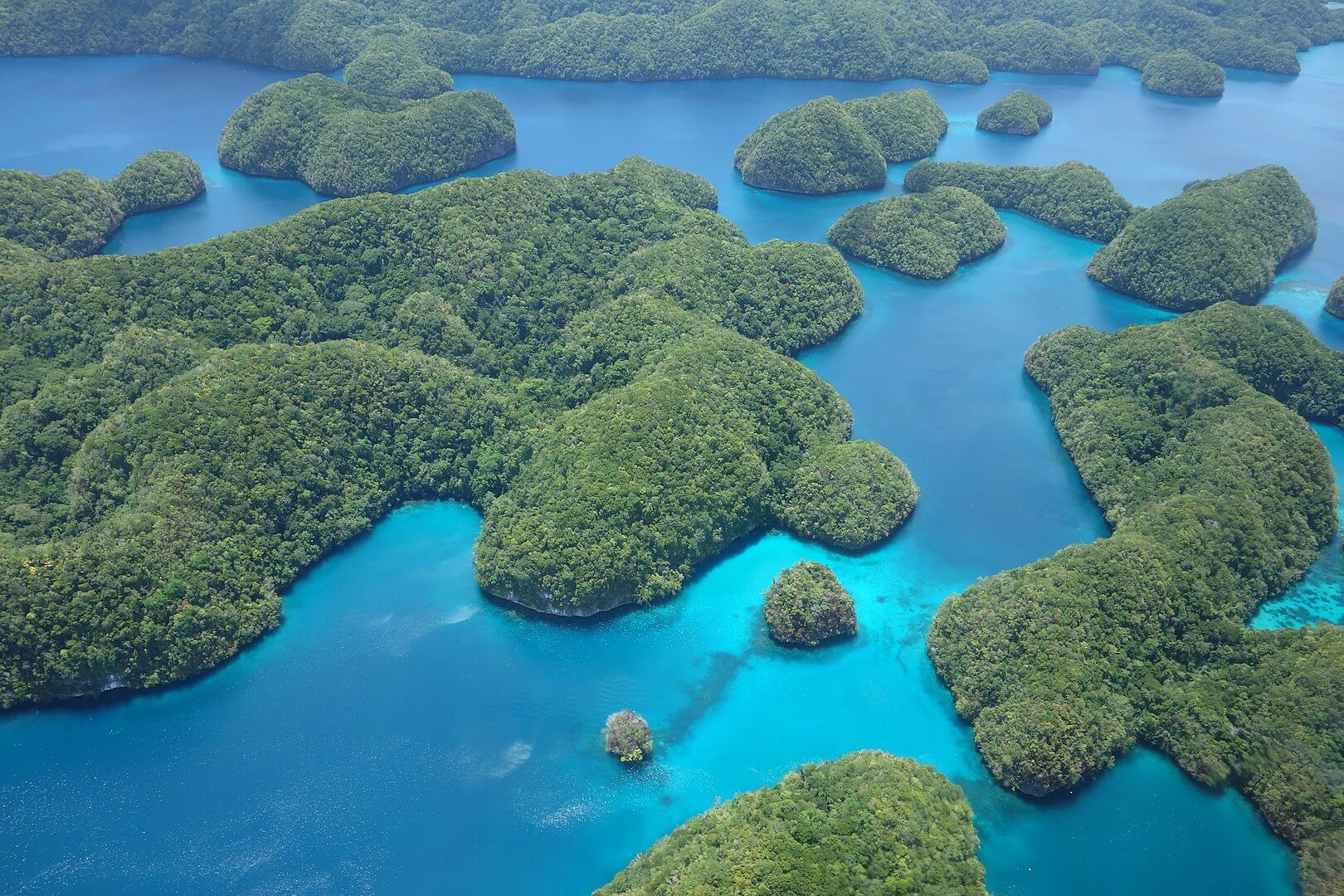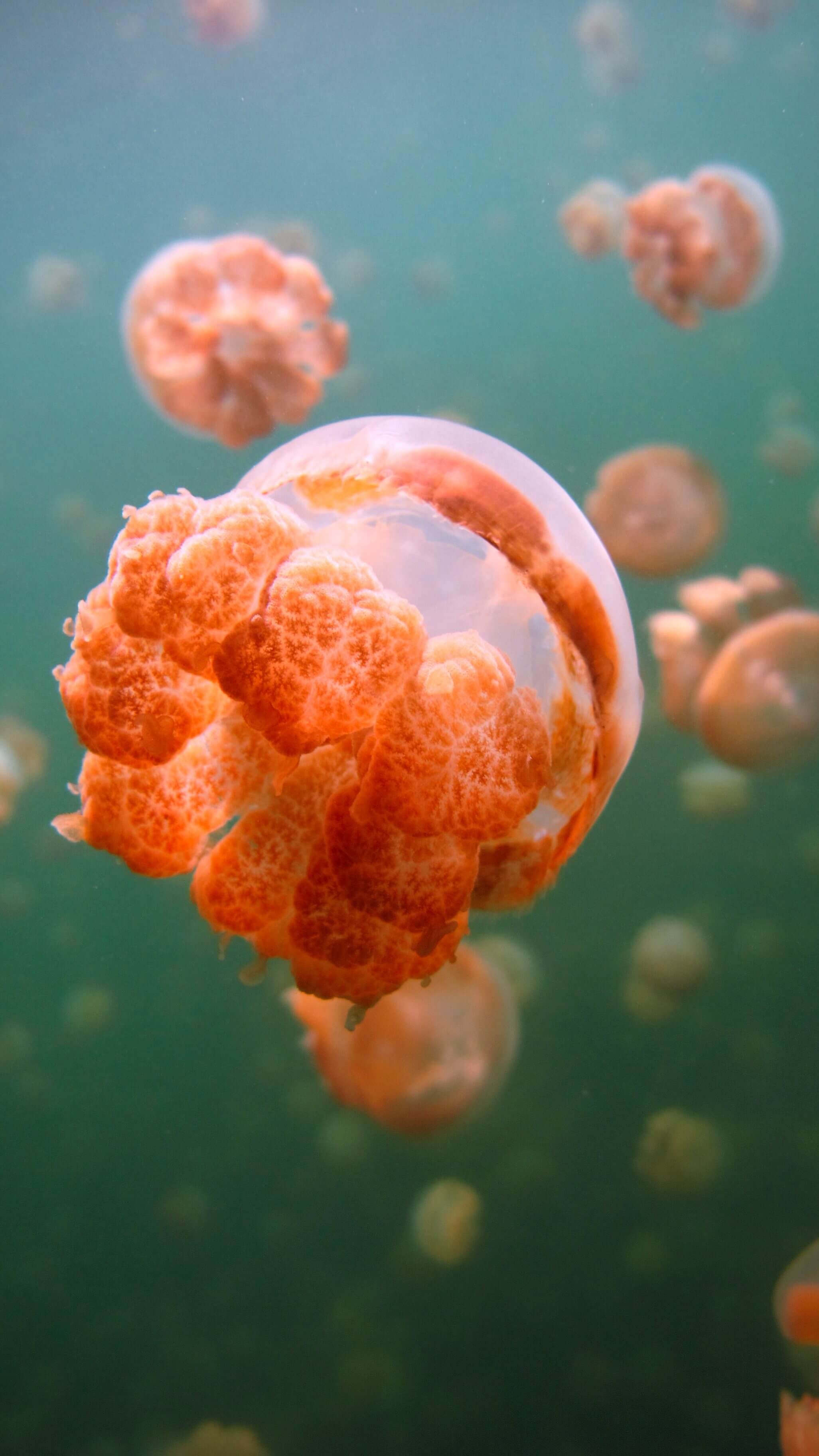
Palau's Living Tapestry
UNESCO World Heritage and the Rock Islands
A Journey into a World of Limestone Islands, Rich Culture, and Nature's Resilience
In the heart of Palau lies the UNESCO World Heritage site known as the Rock Islands Southern Lagoon, a living testament to the intricate dance between nature, culture, and the resilience of island communities. Spanning over 100,200 hectares, this sanctuary comprises 445 uninhabited limestone islands, each with a distinct mushroom-like silhouette, cradled by coral reefs and caressed by turquoise lagoons.

A World of Biodiversity & Wonder
Within this extraordinary expanse, nature has woven a tapestry of life, boasting over 385 coral species, an array of flora and fauna, and a vibrant marine community that includes the elusive dugong and thirteen species of sharks. It's a living museum of biodiversity, and within its boundaries lies the highest concentration of marine lakes anywhere on Earth, an invaluable source of scientific discovery.
A Dance With Non-stinging Jellies in a Natural Wonderland
In one of these marine lakes lies a phenomenon that defies imagination: the enchanting Jellyfish Lake. This secluded sanctuary, renowned for its population of non-stinging Mastigias papua etpisoni jellyfish, offers a rare and wondrous opportunity to swim among these gentle creatures in their natural habitat.

Like a ballet of color and grace, the waters of Jellyfish Lake come alive with the vivid hues of bright orange jellies, creating a living tapestry that seems plucked from a dream. This species of jellyfish, unique to Palau, have evolved in isolation, losing their stinging cells over time. As a result, they are a delightful company for swimmers, their ethereal forms moving in a graceful ballet beneath the surface.
To safeguard this living treasure, the Palau government has implemented stringent measures. Diving is strictly prohibited to maintain the delicate balance within the lake's layers. The top layer, less saline and bathed in sunlight, provides the ideal conditions for jellyfish, fish, and plankton. Below lies a layer of harmful hydrogen sulfide, a stark reminder of the lake's dual nature.
Before venturing into this aquatic wonderland, visitors are mandated to use environmentally friendly sunscreen, applied at least 30 minutes prior to entry, to ensure the lake's fragile ecosystem remains unharmed.
Swimming in Jellyfish Lake is an immersive journey that transcends the ordinary, leaving an indelible mark on those fortunate enough to partake. Multiple trip dates throughout the year open the door to this extraordinary encounter, allowing you to witness the jellies following the sun's path, a testament to the delicate dance of life within the lake.
Swimming in Jellyfish Lake is an immersive journey that transcends the ordinary, leaving an indelible mark on those fortunate enough to partake. Multiple trip dates throughout the year open the door to this extraordinary encounter, allowing you to witness the jellies following the sun's path, a testament to the delicate dance of life within the lake.
Echoes of Ancestral Footsteps
Yet, amidst this natural splendor lies a testament to human history. Remnants of stonework villages, ancient burial sites, and rock art dating back thousands of years dot the landscape. These echoes of the past provide a poignant glimpse into the lives of those who once called these islands home.
A Chronicle of Resilience
The Rock Islands' history tells a tale of adaptation and resilience. As villages were abandoned in the 17th and 18th centuries, a chronicle of climate change, population shifts, and evolving subsistence practices emerged. It serves as a poignant reminder of the delicate balance between human societies and their natural environments.
Preserving a Legacy
Today, the descendants of these original inhabitants keep the flame of their heritage alive through oral traditions, legends, myths, and dances. They are the living threads that connect the past to the present, ensuring that the legacy of the Rock Islands endures.

A Living Laboratory for Conservation
Recognized for its exceptional biodiversity and marine habitats, the Rock Islands Southern Lagoon stands as a beacon for conservation efforts. The property's boundaries are well-defined, encompassing both lagoonal and reef habitats. With robust legislative frameworks and traditional value systems in place, it is a sanctuary where nature and culture intertwine.

Guardians of Tomorrow
Yet, the journey towards conservation is ongoing. As visitors, we bear the responsibility of safeguarding this fragile ecosystem from the impacts of tourism and development. Through vigilance, education, and adaptation to climate change, we can ensure that this living tapestry remains intact for generations to come.
Embark on Your Journey Through Palau's UNESCO World Heritage


